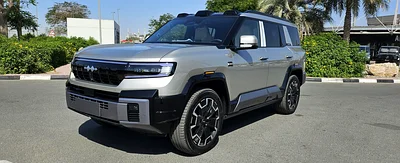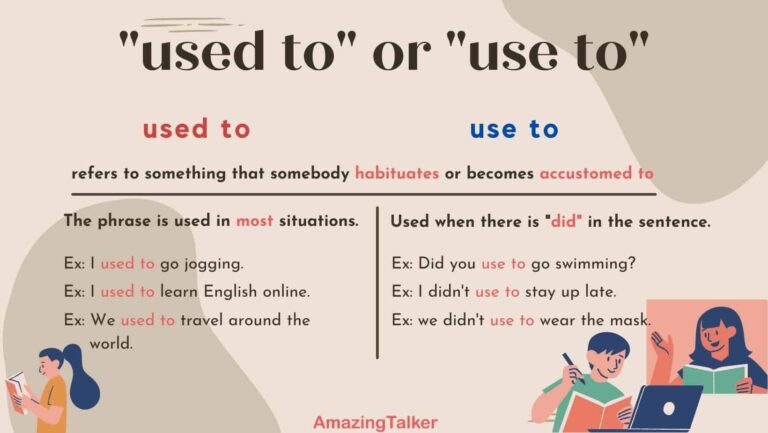Brand New 4WD Cars: Your Ultimate Guide to Off-Road Readiness and Everyday Capability
Brand New 4WD Cars: Your Ultimate Guide to Off-Road Readiness and Everyday Capability cars.truckstrend.com
In a world increasingly characterized by diverse terrains and unpredictable weather, the allure of a Four-Wheel Drive (4WD) vehicle remains as strong as ever. More than just a status symbol, a brand new 4WD car represents a fusion of robust engineering, advanced technology, and unparalleled versatility. Whether you’re an avid adventurer seeking to conquer challenging trails, a family prioritizing safety and stability in adverse conditions, or simply someone who appreciates the confidence that comes with enhanced traction, a new 4WD offers a compelling proposition.
This comprehensive guide will delve into the multifaceted world of brand new 4WD cars, exploring their core mechanics, the benefits of buying new, crucial considerations for prospective owners, the diverse range of models available, and practical advice to help you make an informed decision.
Brand New 4WD Cars: Your Ultimate Guide to Off-Road Readiness and Everyday Capability
The Core of 4WD: Understanding the Systems
At its heart, a 4WD system is designed to provide power to all four wheels of a vehicle, either full-time or on-demand. This capability significantly enhances traction, particularly on slippery surfaces like snow, mud, sand, or loose gravel, and is essential for serious off-roading. It’s crucial to understand the distinctions between the primary types of 4WD systems found in brand new vehicles today:
-
Part-Time 4WD: This is the traditional 4WD system, typically found in rugged SUVs and pickup trucks. It offers selectable modes (e.g., 2H, 4H, 4L).
- 2H (Two-Wheel Drive High): For everyday road driving, optimizing fuel efficiency.
- 4H (Four-Wheel Drive High): Engages all four wheels for increased traction at higher speeds on loose or slippery surfaces. It should not be used on dry, paved roads as it can cause drivetrain binding and damage.
- 4L (Four-Wheel Drive Low): Provides maximum torque at low speeds for extreme off-road conditions, climbing steep inclines, or heavy towing.
- Pros: Highly capable off-road, robust.
- Cons: Requires manual engagement, not suitable for all road conditions.

-
Full-Time 4WD: As the name suggests, this system continuously powers all four wheels. It incorporates a center differential that allows the front and rear wheels to rotate at different speeds, making it safe for use on all surfaces, including dry pavement. Many modern full-time 4WD systems also offer selectable low-range gearing.
- Pros: Excellent traction and stability in all conditions, seamless operation.
- Cons: Generally less fuel-efficient than 2WD modes, potentially more complex.

-
Automatic 4WD / All-Wheel Drive (AWD): Often confused with 4WD, AWD systems are typically found in crossovers and some SUVs. While they also power all four wheels, they do so automatically, sending torque to the wheels with the most grip without driver intervention. Most AWD systems are not designed for extreme off-roading as they lack low-range gearing and often have less robust components. However, they provide excellent stability and traction for daily driving in varied weather conditions.
- Pros: User-friendly, enhanced safety on slippery roads, improved handling.
- Cons: Less capable off-road than true 4WD, not designed for heavy towing in challenging conditions.

When purchasing a brand new 4WD, understanding these distinctions is paramount to ensuring the vehicle aligns with your specific needs and intended use.
Why Go Brand New? Advantages of a New 4WD
While the used market offers tempting deals, investing in a brand new 4WD car comes with a host of undeniable benefits:
- Latest Technology and Safety Features: New models integrate cutting-edge infotainment systems, advanced driver-assistance features (ADAS) like adaptive cruise control, lane-keeping assist, and automatic emergency braking, and the newest connectivity options. These features significantly enhance safety, convenience, and the overall driving experience.
- Full Manufacturer’s Warranty: A brand new vehicle comes with a comprehensive factory warranty, covering major components for a specified period or mileage. This provides invaluable peace of mind against unexpected repairs in the initial years of ownership.
- Unquestionable Reliability and Performance: You’re the first owner, meaning the vehicle has no hidden history of accidents, poor maintenance, or undisclosed issues. You get a pristine vehicle with peak performance and reliability right off the assembly line.
- Customization and Personalization: Buying new allows you to choose your preferred trim level, color, interior options, and factory-installed accessories. You can tailor the vehicle precisely to your taste and needs, rather than settling for what’s available on the used market.
- Enhanced Resale Value: While depreciation is a factor, brand new 4WD vehicles, especially popular models with a strong reputation for durability and off-road prowess, tend to hold their value better than their 2WD counterparts or less desirable models.
- Favorable Financing and Incentives: Manufacturers and dealerships often offer attractive financing rates, cash-back incentives, or special lease deals on new vehicles, which can significantly reduce the total cost of ownership.
Key Considerations Before Your Purchase
Acquiring a brand new 4WD is a significant investment. Careful consideration of these factors will ensure you make the right choice:
-
Your Needs and Lifestyle Assessment:
- Primary Use: Will you be tackling extreme off-road trails, towing heavy loads, navigating snowy commutes, or simply seeking enhanced safety for family trips?
- Passenger and Cargo Capacity: How many people will you regularly transport? What kind of gear or luggage do you need to carry?
- Towing Requirements: If towing is a priority, check the vehicle’s maximum towing capacity and consider a model with a robust frame and adequate engine power.
-
Budget Beyond the Sticker Price:
- Purchase Price: Factor in not just the MSRP but also taxes, registration fees, and potential dealer add-ons.
- Fuel Efficiency: 4WD vehicles, especially larger ones, tend to have lower fuel economy. Calculate estimated annual fuel costs based on your driving habits.
- Insurance: Premiums for 4WD vehicles can be higher due to their value and repair costs. Get insurance quotes before finalizing your purchase.
- Maintenance: While new vehicles are under warranty, consider the long-term maintenance costs, especially for specialized 4WD components.
-
Engine and Drivetrain:
- Power and Torque: Do you need a powerful V6, V8, or a more fuel-efficient turbocharged four-cylinder?
- Transmission: Automatic transmissions are standard, but some off-road enthusiasts prefer manual options for greater control.
- Locking Differentials: For serious off-roading, look for models offering front, rear, or center locking differentials, which provide maximum traction when one or more wheels lose grip.
-
Safety and Technology Features:
- Active Safety: Look for features like blind-spot monitoring, rear cross-traffic alert, surround-view cameras, and adaptive cruise control.
- Passive Safety: Evaluate crash test ratings (NHTSA, IIHS) and the number of airbags.
- Infotainment: Ensure the system offers features important to you, such as Apple CarPlay/Android Auto, navigation, and a user-friendly interface.
-
Test Drive and Ergonomics: Always test drive the exact trim level you’re considering. Pay attention to ride comfort, handling, visibility, seating comfort, and the ease of accessing controls. If possible, test it on various road surfaces that mimic your typical driving conditions.
Navigating the Market: Types of Brand New 4WD Cars
The market for brand new 4WD vehicles is diverse, catering to a wide range of preferences and budgets:
-
Compact 4WD SUVs/Crossovers: Ideal for urban dwellers or small families who need enhanced traction for occasional light off-roading or snowy conditions. They offer better fuel economy and maneuverability.
- Examples: Subaru Forester, Toyota RAV4 (with AWD), Honda CR-V (with AWD). While many are AWD, some trims offer more robust systems.
-
Mid-Size 4WD SUVs: A popular segment offering a balance of capability, passenger comfort, and cargo space. Many are built on truck platforms, providing true off-road prowess.
- Examples: Toyota 4Runner, Jeep Wrangler, Ford Bronco, Land Rover Defender.
-
Full-Size 4WD SUVs: Designed for maximum passenger capacity, cargo volume, and towing capability. Often based on pickup truck platforms, they offer robust 4WD systems for serious work or large families.
- Examples: Chevrolet Tahoe/Suburban, Ford Expedition, Toyota Sequoia, Nissan Armada.
-
4WD Pickup Trucks: The backbone of many industries and a favorite for adventurers. They offer unparalleled utility, towing, and hauling capabilities, combined with powerful 4WD systems.
- Examples: Ford F-150, Ram 1500, Chevrolet Silverado, Toyota Tacoma, Nissan Titan.
Practical Tips for Choosing and Buying
- Do Your Homework: Research specific models extensively. Read professional reviews, watch video comparisons, and check owner forums for common issues or praised features.
- Understand Trim Levels: Don’t just look at the base price. Higher trim levels often include desirable features, more advanced 4WD systems, or luxury amenities that might be worth the extra cost.
- Negotiate Wisely: Be prepared to negotiate the price. Research the invoice price (what the dealer paid) to have a strong starting point. Consider financing options from both the dealership and independent lenders.
- Pre-Order and Customization: For popular models, pre-ordering allows you to get exactly the specifications you want, though it may involve a waiting period.
- Consider Aftermarket Potential: If you plan on serious off-roading, research the availability of aftermarket parts (lift kits, skid plates, winches) for your chosen model.
Potential Challenges and How to Address Them
While the benefits are numerous, owning a brand new 4WD car can present a few challenges:
- Higher Initial Cost: True 4WD vehicles, especially new ones, often command a higher price tag than their 2WD counterparts.
- Solution: Factor this into your budget early, explore financing options, and look for manufacturer incentives.
- Increased Fuel Consumption: The added weight and complexity of 4WD systems generally lead to lower fuel economy.
- Solution: Choose a model with a more efficient engine (e.g., a V6 or turbocharged 4-cylinder), practice fuel-efficient driving habits, and utilize 2WD mode when appropriate.
- Parking and Maneuverability: Larger 4WD SUVs and trucks can be challenging to park in tight urban spaces.
- Solution: Utilize features like parking sensors, surround-view cameras, and consider a more compact 4WD SUV if urban driving is your primary use.
- Specialized Maintenance: 4WD systems require specific maintenance, such as differential fluid changes, which can add to long-term costs.
- Solution: Follow the manufacturer’s recommended maintenance schedule diligently, and factor these costs into your long-term budget.
Brand New 4WD Cars: Example Price Table (Estimated Starting MSRP)
Please note: Prices are highly variable based on trim level, optional features, region, and current market conditions. These are estimated starting Manufacturer’s Suggested Retail Prices (MSRP) for base 4WD models and are subject to change.
| Model | Type | Engine (Base) | Estimated Starting MSRP (USD) | Key Features (Base 4WD) |
|---|---|---|---|---|
| Jeep Wrangler (Sport) | Mid-Size SUV | 3.6L V6 | $35,000 – $40,000 | Legendary off-road capability, removable doors/roof, solid axles, Command-Trac 4×4 |
| Toyota 4Runner (SR5) | Mid-Size SUV | 4.0L V6 | $42,000 – $47,000 | Robust body-on-frame, excellent reliability, part-time 4WD |
| Ford Bronco (Base) | Mid-Size SUV | 2.3L EcoBoost I4 | $37,000 – $42,000 | G.O.A.T. modes, removable panels, independent front suspension, multiple 4×4 systems |
| Subaru Forester (Base) | Compact Crossover | 2.5L H4 | $28,000 – $32,000 | Symmetrical All-Wheel Drive, X-Mode, EyeSight safety suite |
| Ford F-150 (XL 4×4) | Full-Size Pickup | 3.3L V6 | $42,000 – $47,000 | High towing/payload, military-grade aluminum body, selectable drive modes |
| Chevrolet Tahoe (LS 4WD) | Full-Size SUV | 5.3L V8 | $60,000 – $65,000 | Spacious interior, strong towing, independent rear suspension, versatile cargo |
| Toyota RAV4 (LE AWD) | Compact Crossover | 2.5L I4 | $30,000 – $35,000 | Dynamic Torque Vectoring AWD, excellent fuel economy, Toyota Safety Sense 3.0 |
Note: These prices are estimates and do not include destination charges, taxes, title, license fees, or optional equipment. Always consult a local dealership for exact pricing.
Frequently Asked Questions (FAQ)
Q1: Is 4WD better than AWD?
A1: It depends on your needs. True 4WD (with low-range gearing) is superior for serious off-roading, rock crawling, and heavy-duty towing in challenging conditions. AWD is generally better for everyday driving on slippery roads (snow, rain, gravel) and offers better fuel efficiency and lighter weight. AWD systems are usually automatic and don’t require driver input, while 4WD systems often do.
Q2: Do I really need 4WD?
A2: Consider your typical driving conditions. If you frequently encounter heavy snow, mud, unpaved roads, or plan on off-roading or towing heavy loads, 4WD is highly beneficial. If you mostly drive on paved roads with occasional light snow, an AWD vehicle might suffice and be more fuel-efficient.
Q3: Are 4WD cars expensive to maintain?
A3: Generally, yes, slightly more than 2WD vehicles. The additional components (transfer case, differentials, heavier axles) require specific fluid changes and inspections. However, modern 4WD systems are robust, and regular maintenance prevents costly repairs.
Q4: What’s the best 4WD for daily driving?
A4: For daily driving with occasional need for extra traction, a compact or mid-size 4WD SUV or crossover with a full-time 4WD or advanced AWD system (like a Subaru Forester, Toyota RAV4 AWD, or a lighter-duty Jeep Cherokee Trailhawk) balances capability with comfort and fuel efficiency.
Q5: How long do brand new 4WD cars last?
A5: With proper maintenance, a brand new 4WD car can easily last 150,000 to 250,000 miles or more. Many popular models, especially from brands known for reliability like Toyota and Honda, are renowned for exceeding 300,000 miles. Buying new ensures you start with a clean slate and benefit from the latest manufacturing quality.
Conclusion
Investing in a brand new 4WD car is a decision that offers a unique blend of capability, safety, and modern convenience. From the rugged trails to the urban jungle, these vehicles are engineered to perform, providing drivers with confidence and control in a multitude of scenarios. By understanding the different 4WD systems, weighing the benefits of buying new, and carefully considering your personal needs and budget, you can navigate the exciting world of brand new 4WD cars and find the perfect vehicle to empower your adventures, no matter where the road (or lack thereof) takes you. A brand new 4WD isn’t just a purchase; it’s an investment in freedom, security, and the ability to explore beyond the beaten path.



